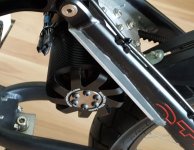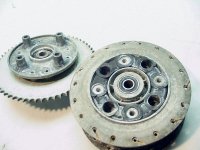Super Loctite was sort of joke. They do make many different flavors though. I used some green "wicking grade" stuff that was almost like welding the parts together. I don't remember the number. It was more like super glue.
Yes, any kind of anaerobic locking fluid doesn't work well if there is much clearance to start with. Epoxy might work.
Another option would be some kind of clamping arrangement like a Taper-lock bushing. If the parts are held together tightly enough, the whole shaft would shear off first.
Yes, any kind of anaerobic locking fluid doesn't work well if there is much clearance to start with. Epoxy might work.
Another option would be some kind of clamping arrangement like a Taper-lock bushing. If the parts are held together tightly enough, the whole shaft would shear off first.



